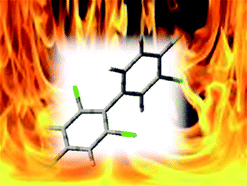Polybrominated diphenyl ethers (PBDEs) are considered to be persistent environmental pollutants. Although soil is considered the most likely sink for these contaminants, little is known about the potential adsorption and aging of these compounds to the soil matrix. A previous study performed in our lab suggested that abiotic sorption of PBDEs to soil constituents was the most important determinant of PBDE accessibility. Building on this work, the present paper examined the availability of congeners of a commercial PBDE mixture (DE-71) in soils that varied in organic matter content, clay content, and pH. Both sterile and non-sterile soils were amended with DE-71 and then monitored over eight weeks of aging. Recovery of all congeners from soil by acetone extraction dropped significantly over time. Comparisons between sterile and non-sterile samples, along with the results of a separate phase partitioning study, indicated a strong affinity between soils and monitored DE-71 components. This general phenomenon was so dominant that, in this study, varying soil characteristics had no significant effect on PBDE recovery. Unexpectedly, final recovery was significantly higher in the non-sterile soil. The biological impact on congener accessibility was also observed when zucchini and radish plants were grown in soil that had been aged 8 weeks following DE-71 fortification. After 10 weeks of growth, recovery of congeners was up to five times higher than it had been prior to planting.

You have access to this article
 Please wait while we load your content...
Something went wrong. Try again?
Please wait while we load your content...
Something went wrong. Try again?


 Please wait while we load your content...
Please wait while we load your content...